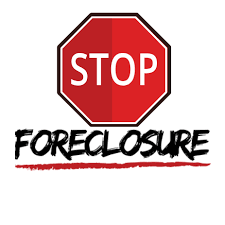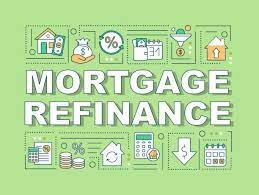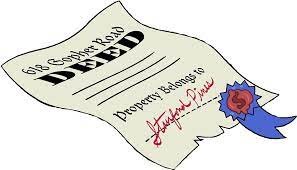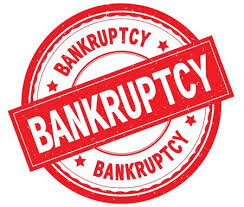
Topics of this article
- Negotiate with Your Lender
- Refinance Your Loan
- Apply for a Loan Modification
- Sell Your Home
- Opt for a Short Sale
- Consider a Deed Instead of a Foreclosure
- File for Bankruptcy

1. Negotiate with Your Lender
One of the first steps you can take when you cannot keep up with your mortgage payments is to communicate openly with your lender. Many homeowners may be reluctant to do this out of fear or embarrassment. Still, it’s important to remember that lenders often prefer to avoid the costly and time-consuming foreclosure process. Consequently, they are typically willing to work with homeowners to find an alternative solution.
When negotiating with your lender, be honest about your financial situation. Please provide them with details about why you ca unable to meet your mortgage obligations and what you’ve done to rectify the problem.
There are several ways a lender may agree to modify your loan terms:
- Repayment Plan: If your financial hardship is temporary (e.g., due to illness or job loss), the lender may agree to a repayment plan. This usually involves making your regular monthly payment plus an additional amount to pay off the past-due total over time.
- Forbearance: If you’ve suffered a temporary setback but can demonstrate that you can resume payment shortly (perhaps due to a new job or a bonus), the lender may agree to a forbearance. This involves temporarily reducing or suspending your payments.
- Loan Extension: This involves adding missed payments to the back end of the loan. While this increases the loan term, it allows you to get back on track without immediately making up for missed payments.
Each of these options has its advantages and drawbacks. The key is to work with your lender to find a solution that best fits your current circumstances and future financial prospects. If any of this feels overwhelming, we are here to HELP you.

2. Refinance Your Loan
Refinancing your loan means replacing your current mortgage with a new one, often with different loan terms that better suit your financial situation. If you have equity in your home and can secure a lower interest rate, this can be a viable method to prevent foreclosure.
Refinancing can help in two key ways:
- Lower Monthly Payments: By securing a lower interest rate, your monthly loan amount can decrease significantly. This is particularly relevant if market interest rates have fallen since you took out your mortgage. Lower monthly payments can alleviate financial pressure, making staying on top of your mortgage easier.
- Extended Loan Term: Refinancing can also offer an opportunity to extend your loan term. For example, if you initially had a 15-year mortgage, you could refinance to a 30-year mortgage. This extension would result in smaller monthly payments spread over a longer period.
However, while refinancing can provide financial relief, there are factors to consider. Extending the loan term means you’ll be in debt for a longer period and may end up paying more in total interest over the life of the loan. Additionally, there are often costs associated with refinancing, such as closing costs and possible prepayment penalties.
It’s also crucial to understand that refinancing is not a guarantee. It typically requires a credit check, home appraisal, and proof of income. If you’re already struggling with payments and your credit score has taken a hit, qualifying for a refinance may be challenging.
Before deciding to refinance, discussing the situation with a financial advisor or mortgage specialist is recommended. They can help you understand the potential benefits and drawbacks in the context of your specific situation.

3. Apply for a Loan Modification
A loan modification is a permanent restructuring of your mortgage where your lender changes the terms of your loan to make payments more manageable. This process is especially beneficial for underwater homeowners (owing more on their mortgage than the current home market value) or facing long-term financial hardships.
Loan modification programs vary, but they often include:
- Interest Rate Reduction: A reduced interest rate can lower monthly mortgage payments. If interest rates have dropped since you took out your loan, or if you had a particularly high-interest rate, a modification could include lowering this rate.
- Extension of Loan Term: Extending your loan term from 30 to 40 years can help reduce your monthly payments. However, it’s important to remember that this means you’ll be paying off your mortgage longer.
- Principal Forbearance or Reduction: In some cases, lenders may agree to a principal forbearance, where a portion of your total loan balance is set aside until the end of the loan period. You’re not required to pay this set-aside amount until your loan matures or you refinance or sell your home. In rare cases, a lender may agree to a principal reduction, decreasing the total amount you owe.
Programs like the Home Affordable Modification Program (HAMP) have assisted numerous homeowners. While HAMP is no longer available, lenders or local governments may offer similar programs.
Applying for a loan modification involves proving to your lender that you cannot make the current mortgage payments due to financial hardship. You must submit financial documents, such as pay stubs, tax returns, and a hardship letter explaining your financial situation.
The modification process can take time, and there’s no approval guarantee. However, for many homeowners, it can provide significant relief and the chance to avoid foreclosure. As with any major financial decision, seeking professional advice is essential. If any of this feels overwhelming, we are here to HELP you.

4. Sell Your Home
Selling your home is another practical strategy if you’re facing foreclosure, especially if you have enough equity to cover your mortgage and related selling expenses. This is often considered a last resort for homeowners who have exhausted other options, but it can be a viable solution to prevent foreclosure and protect your credit score.
When considering this option, you have two primary routes:

- Fast Sale with Local Honest Homebuyer: If time is of the essence and you cannot keep up with mortgage payments, selling your home quickly to Local Honest Homebuyer can be an efficient solution. These real estate investors buy homes in any condition, always in cash, providing a quicker closing process. However, keep in mind that these buyers are looking to make a fair profit and may offer less than the market value of your home, but if speed and convenience are important, they are an excellent option.
- Work with a Real Estate Agent: The traditional route is hiring a real estate agent to sell your home. An experienced agent can provide a realistic home valuation, list your property, market it to potential buyers, and handle the paperwork. This option can help you get the highest price for your home, but it can also take time—time you may not have if you’re on the brink of foreclosure. Plus, you’ll need to account for the agent’s commission, typically 5-6% of the sale price.
While selling your home can prevent foreclosure, you’ll need to find a new place to live. Depending on your financial situation, this could involve renting a home or apartment until you’re ready to become a homeowner again. Always consider the impact on your lifestyle and finances before choosing to sell your home to avoid foreclosure.

5. Opt for a Short Sale
A short sale is a real estate transaction where the proceeds from selling the property fall short of the balance of debts secured by liens against the property. In other words, you’re selling your home for less than you owe on your mortgage. This strategy can prevent foreclosure but requires the lender’s approval, as they’ll receive less than the owed amount. Find out more about “the short sale process” by reading this detailed guide.
Here’s a more detailed look at how a short sale works:
- Approval Process: The first step in a short sale is to contact your lender and discuss the situation. Not all lenders will agree to a short sale, so you must make your case by demonstrating your financial hardship. You’ll also need to provide documents such as a letter of authorization, a preliminary net sheet, proof of income and assets, a comparative market analysis, and a hardship letter.
- Finding a Buyer: Once your lender has agreed to a short sale, you’ll work with a real estate agent to list your property and find a buyer. The buyer’s offer must be approved by your lender before the sale can proceed.
- Sale Process: If the lender accepts the buyer’s offer, the sales process can proceed. Because the lender is involved in the sale, the process can take longer than a regular real estate transaction. The average short sale takes 3-6 months to close.
While a short sale can be a way to avoid foreclosure, it’s important to understand its implications. A short sale can negatively affect your credit score, though not as severely as a foreclosure. It can also have tax consequences, as the IRS may consider the forgiven debt as income.
Finally, remember that lenders typically agree to a short sale only when they believe it will result in a smaller financial loss than foreclosing. It’s, therefore, crucial to work with a real estate professional experienced in short sales to ensure the process goes smoothly.

6. Consider a Deed Instead of a Foreclosure
A Deed instead of Foreclosure, often referred to as a “deed-in-lieu,” is an option where you voluntarily transfer the ownership of your property to the lender to avoid the foreclosure process and satisfy your mortgage debt.
Here’s a closer look at how a deed-in-lieu works:
- Negotiating Terms: If you cannot make mortgage payments and foresee that this will not change, you can contact your lender and propose a deed-in-lieu. The lender will require you to provide evidence of your financial hardship and inability to sell the property at a price that would cover the mortgage.
- Property Appraisal: The lender will typically appraise the property to ensure the value is commensurate with the loan balance. They will also check for any other liens on the property, as those would need to be settled before the lender accepts the deed.
- Transfer of Ownership: If the lender agrees to the deed-in-lieu, they’ll prepare documents outlining the terms of the agreement. Once signed, the property title will be transferred to the lender, relieving you of your mortgage debt.
A deed-in-lieu can offer several benefits over foreclosure. It can be quicker and less stressful than a drawn-out foreclosure process. It may also be less damaging to your credit score than a foreclosure, and some lenders may offer a “cash for keys” program, providing a small amount to help with moving costs.
However, a deed-in-lieu also has potential downsides. Similar to a short sale, it can have tax implications, as the IRS may view the forgiven debt as taxable income. Additionally, lenders may not agree to a deed-in-lieu if they believe foreclosure would be more financially beneficial to them.
As always, seeking advice from a financial advisor or attorney is advisable when considering a deed-in-lieu of foreclosure. It’s essential to fully understand the agreement’s terms and potential consequences before proceeding. If any of this feels overwhelming, we are here to HELP you.

7. File for Bankruptcy
Filing for bankruptcy is a serious decision and should be considered a last resort due to its long-term impact on your credit. However, it can be a strategic tool to keep your home and regain financial stability when facing foreclosure and other overwhelming debts.
There are two types of personal bankruptcy that you can file: Chapter 7 and Chapter 13.
Chapter 7 Bankruptcy
In a Chapter 7 bankruptcy, a trustee is appointed to take control of your assets, sell them, and then distribute the proceeds to your creditors. Although this sounds alarming, the bankruptcy code allows many of your assets, potentially including your home, to be exempted from this process.
If your state’s homestead exemption entirely covers your home equity, Chapter 7 can be a good option, as you can wipe out your unsecured debts while keeping your home. However, it won’t help if you’re behind on your mortgage payments; your lender can still proceed with the foreclosure after the bankruptcy case is complete.
Chapter 13 Bankruptcy
Chapter 13 bankruptcy, on the other hand, allows you to keep your assets and provides a repayment plan to catch up on delinquent debts over three to five years. This option can halt foreclosure and give you time to make up missed mortgage payments.
When you file for Chapter 13 bankruptcy, an automatic stay goes into effect, immediately stopping any foreclosure proceedings. You’ll then propose a repayment plan that the court must approve. Once the plan is approved and you make the payments, you can keep your home.
Despite these benefits, filing for bankruptcy has severe consequences. It can dramatically lower your credit score and remain on your credit report for up to ten years. This can make it challenging to secure credit, buy a new home, or even find employment in some cases. It’s strongly recommended to seek advice from a competent attorney or financial advisor to understand all implications before pursuing bankruptcy. If any of this feels overwhelming, we are here to HELP you.

Concluding Thoughts
Foreclosure can be overwhelming, but it’s not a dead-end. As a Northern Kentucky homeowner, various strategies can aid you through this tough period. You can sidestep foreclosure through dialogue with your lender, loan modifications, home selling, or bankruptcy.
Take swift action and understand each choice’s impact. No one solution fits all – each situation is distinct. Evaluating each strategy’s pros and cons is crucial based on your finances and long-term effect.
Although this overview is informative, always consult professionals for critical financial issues. Financial advisors, real estate agents, or legal experts can provide invaluable guidance. Foreclosure might be daunting, but you’re not alone, and a stable financial future is possible.

Local Honest Homebuyer
And here is an offer that is hard to refuse; reach out to us, and we’ll HELP you. We are local real estate buyers, and we can answer your questions. Check out our Google reviews, LOCAL HONEST HOMEBUYER GOOGLE REVIEWS
